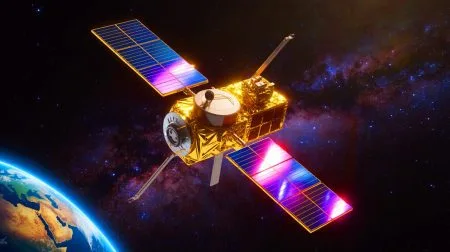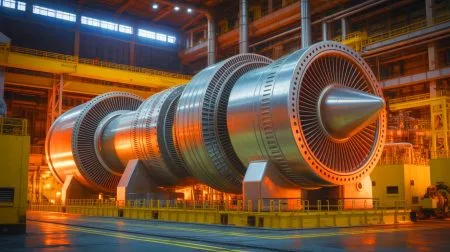| IN A NUTSHELL |
|
The landscape of electric vehicles is on the brink of transformation, thanks to Contemporary Amperex Technology Ltd (CATL). At the forefront of battery innovation, CATL has unveiled three groundbreaking technologies poised to address common EV challenges such as range anxiety, slow charging times, and cold-weather performance. These innovations, presented during their inaugural ‘Super Tech Day,’ are set to revolutionize the EV industry and enhance the driving experience for consumers worldwide. With advancements like the Naxtra sodium-ion cells, the Freevoy dual-power pack, and the second-generation Shenxing fast-charging battery, CATL is setting a new standard for battery technology.
Naxtra: Sodium Stepped Out of the Lab
The introduction of CATL’s Naxtra sodium-ion cells marks a significant leap in battery chemistry. Sodium, an abundant and cost-effective element, presents a promising alternative to lithium. Historically, sodium-ion technology lagged due to its lower energy density, but CATL’s Naxtra cells have changed that narrative. These cells boast an impressive 175 Wh/kg energy density, delivering approximately 310 miles of real-world range.
One of the standout features of Naxtra is its performance in extreme cold. Even at -40°F, the battery retains 90% of its power, making it ideal for regions like Alaska and the Upper Midwest where frigid temperatures are common. Additionally, sodium’s inherent flame-retardant properties enhance safety by eliminating oxygen-releasing elements that contribute to thermal runaway. This safety aspect is crucial, as it shifts focus from containment to prevention.
Naxtra’s potential extends beyond passenger vehicles. CATL offers a 24-V version for heavy-duty applications, suitable for trucks and buses that endure harsh operating conditions. By potentially replacing lithium iron phosphate (LFP) in budget and fleet vehicles, Naxtra could reduce material costs without compromising range, offering a scalable solution for the EV market.
Freevoy: A Battery Pack with Two Brains
Freevoy represents a revolutionary approach to battery architecture, featuring a dual-power configuration that enhances both performance and efficiency. Imagine a battery pack with two distinct energy zones, each optimized for different driving conditions. The high-energy zone caters to regular driving, while the second zone, designed for power density and low-temperature resilience, activates under demanding conditions.
This innovation is made possible by CATL’s self-forming anode, which allows for tighter packing of active materials. The result is a battery with 60% higher volumetric energy density and 50% higher gravimetric density compared to standard packs. This translates to more miles per charge or a lighter battery for the same range.
Freevoy’s versatility is further exemplified by its mix-and-match capability. Whether it’s a sodium + LFP combination for cold climates or an NCM + LFP setup for high-performance vehicles, Freevoy adapts to diverse needs. The dual-power design also introduces a layer of redundancy, ensuring continued operation even if one zone encounters a fault. This dual-brain approach not only enhances safety but also optimizes performance across various driving scenarios.
Shenxing Gen 2: A 5-Minute Coffee Break to 80%
The second-generation Shenxing battery is a game-changer for EV charging. Building on the success of its predecessor, the new Shenxing cell supports 12C charging, equivalent to 1.3 MW at peak. This means drivers can add 2.5 miles of range every second, achieving a 5% to 80% charge in just 10 minutes at moderate temperatures. Even in extreme cold, the battery reaches the same charge level in 15 minutes, outperforming current industry standards.
With a full charge offering around 500 miles of range, the Shenxing Gen 2 battery aligns with the capabilities of long-range gasoline vehicles. Moreover, CATL’s engineers have improved electrolyte additives and separator porosity, enabling the battery to deliver ≈830 kW even at low temperatures and low states of charge. This ensures consistent performance without the dreaded limp-home acceleration during cold snaps.
The Shenxing Gen 2 battery’s rapid charging capabilities significantly reduce downtime for drivers, making EVs even more appealing. It’s a step towards a future where charging an EV is as quick and convenient as refueling a traditional car, enhancing the overall driving experience.
Why U.S. Automakers Should Pay Attention
CATL’s innovations present a compelling opportunity for U.S. automakers to diversify their battery options and enhance their EV offerings. Most North American EVs currently rely on nickel-rich lithium cells sourced from Asia, but CATL’s sodium, dual-power, and high-speed LFP technologies offer a versatile alternative. These technologies can be tailored to different market segments, climates, and vehicle types without requiring extensive redesigns.
The potential benefits are notable: lower material risk by bypassing strained lithium and cobalt supply chains, faster charging without relying on exotic materials, and enhanced platform flexibility through Freevoy’s adaptable design. CATL’s Super Tech Day signals a shift towards architectural advancements that go beyond mere incremental improvements.
While CATL has already partnered with Tesla and Ford, integrating these advanced technologies into U.S. assembly lines faces challenges related to tariffs and regulatory requirements. However, the promise of safer, more efficient, and cost-effective EVs is an opportunity that American manufacturers cannot afford to ignore. As the industry evolves, will U.S. automakers seize the chance to lead the charge in adopting these groundbreaking innovations?
Did you like it? 4.6/5 (29)






Wow, 310 miles on sodium-ion cells! Is this the end of range anxiety? 🤔
Thanks for the detailed article! It’s exciting to see where EVs are heading.
Is the sodium-ion cell technology scalable for mass production?
The Shenxing Gen 2 battery charging speed is impressive! Is it safe, though?
Freevoy’s adaptability is a game-changer for different climates! 🌍
I’d love to see a cost comparison between these new techs and traditional batteries.
How likely are U.S. automakers to adopt CATL’s innovations, considering regulatory hurdles?
I’m skeptical about the sodium-ion cells’ longevity. Any long-term tests done yet?
Freevoy’s mix-and-match capability sounds like a battery buffet! 😄
Why are these breakthroughs only being announced now? What’s the catch?
The dual-brain battery concept is fascinating. How does it manage the energy zones?
Can these technologies be retrofitted into existing EV models?
Shenxing Gen 2’s rapid charging is a dream come true for road trips! 🚙🛣️
Great to see advancements in cold-weather battery performance. Alaskan EV drivers, rejoice!
Will these techs reduce the overall weight of EVs, making them more efficient?
I’m worried about the safety of simultaneous charging at 12C. How is it managed?
Why hasn’t this tech been implemented before? It seems revolutionary!
Does anyone know how CATL’s tech compares to Tesla’s latest batteries?
Freevoy’s self-forming anode sounds innovative, but is it durable?
CATL’s sodium-ion cells could be a game-changer for budget EVs. Let’s hope so!
How does CATL plan to address the tariff challenges for U.S. integration?
The potential for heavy-duty applications is huge! Will trucking companies bite?
Impressive work, CATL! Can’t wait to see these batteries in action. 🔋🚀
The Freevoy system seems complex. How will maintenance be handled?
Are there any plans to integrate these new technologies with renewable energy systems?
Is the sodium used in Naxtra as sustainable as it seems?
Thanks CATL for taking EV tech to the next level! Can’t wait to see what’s next. 🌟
What kind of warranty will CATL offer on these new battery technologies?
Will Freevoy’s dual-power design impact the overall lifespan of the battery?
The advancements in charging speed are incredible, but how will this affect battery degradation?
These innovations sound promising, but will they drive down the cost of EVs?
Thank you, CATL, for pushing the boundaries of EV technology! 🚗💨
Can the Naxtra batteries really perform well at -40°F? That’s mind-blowing!
Are these advancements going to make EVs more affordable for everyone?
The Freevoy’s dual-power architecture sounds like sci-fi. How reliable is it?
I’m curious about the environmental impact of the sodium-ion cells. Does anyone know?
Freevoy with two brains? Sounds like my morning coffee routine! ☕️
Can we expect these technologies in consumer vehicles anytime soon?
sustainability-times.com